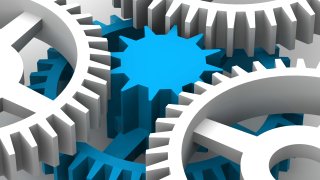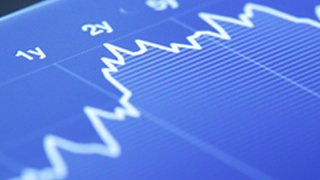New figures from the national accounts show that the Gross Domestic Product (GDP) for Mainland Norway increased significantly in May. GDP for Mainland Norway is still 0.7 per cent below the level in February 2020, which is the last month before the outbreak of the Covid-19 pandemic. The growth in the economy coincides with the gradual reopening of society after the last shutdown. In April and May, stores and shopping malls reopened in several municipalities. After three weeks, the national ban on serving alcohol was lifted but local measures continued some places.
The gross domestic product of wholesale and retail trade increased markedly in May and was the largest contributor to the growth in GDP for Mainland Norway. The activity in the industries that were hit hard by the pandemic, also increased in May. There was an increase in accommodation and food service activities, as well as arts, entertainment and other service activities, but the activity level was still low. In total, the production of services increased by 2.2 per cent. Despite the growth in May, the level is still 2.7 per cent lower than it was in February of 2020.
Manufacturing and mining increased 0.2 per cent in May, which mostly is due to a growth in mining. The development in manufacturing in total, was almost unchanged from April, but there is a different development in the different industries. Production of metal increased in May, while processing of fish declined.
Other good production was approximately unchanged from April to May. Construction contributed positively to production of goods, while fishing and aquaculture pulled down.
Oil and gas extraction fell 1.5 per cent in May. Total GDP, including petroleum activities, pipeline transportation and ocean transport, thus increased by 1.2 per cent.
Consumption
Household consumption increased 4.7 per cent in May. The reopening of stores and malls in several municipalities lead to a significant increase in the consumption of goods. Consumption of goods increased 4.9 per cent, the highest growth since June of last year. There was especially a strong growth in consumption of clothing and footwear, as well as furniture and various household equipment.
Consumption of services increased 3.7 per cent, the highest increase since June 2020. The ban on serving alcohol was lifted on a national level and restaurants reopened in Oslo, which lead to a stark increase in restaurant services. Consumption of hotel and restaurant services contributed the most to service consumption in May. Nevertheless, consumption of services was still 12 per cent lower than before the corona outbreak.
Final consumption expenditure of general government increased 0.3 per cent. Developments in final consumption expenditure of general government are based on various indicators but will be revised when accounts for the central government and municipalities for the second quarter become available. These figures must be regarded as preliminary. Given the unusual circumstances, there is greater uncertainty.
Investments
Gross fixed capital formation increased 2.5 per cent in the period March-May compared to the previous three-month period. Investments in petroleum and dwelling services contributed to the increase. However dwelling services fell in May, after three consecutive months of growth.
For gross fixed capital formation there is generally weak access to sound monthly information. For petroleum investments, investments in manufacturing, mining and power supply, information on planned investments as reported by the companies has been used.
Export and import
Exports decreased by 2.1 per cent in May and were primarily pulled down by natural gas exports. So far this year, the level of exports of crude oil and natural gas was approximately the same as in the same period last year. However, the prices have improved significantly. Measured in current prices, the value of crude oil and natural gas exports have increased almost 70 per cent. The exports of traditional goods increased 0.4 percent compared to the previous month.
Total imports increased 1.8 per cent in May. Exports of traditional goods increased 4.6 per cent, where cars, machines and associated equipment contributed to the increase. The imports of crude oil fell significantly.
Revisions
In connection with new monthly figures, there will be revisions. The statistical sources used will usually not be changed for previous months, but the seasonally adjusted series can still be affected. This is caused by the basis for seasonal adjustments changing when data for new periods is added.
In the current situation, the uncertainty is greater than normal. Revisions are therefor to be expected, also due to potential changes in the underlying data for previously published months. GDP for Mainland Norway in April 2021 is revised up from 0.3 to 0.4 per cent.
In some areas, new statistical sources have been incorporated for previous months. The macroeconomic picture, however, remains mostly as previously published.
Thursday 12th of March 2020 the Norwegian government introduced actions against the spreading of the Corona-virus in Norway. The seasonal adjustment routine during the Corona- crisis is done in such a way that the figures from the start of and during the crisis (from March), are not included in the calculation of the seasonal pattern. Technically, in the seasonal adjustment routine, this is done by specifying March and following months as outliers. The seasonal adjustment routine of Statics Norway is in line with the recommendations of Eurostat.


